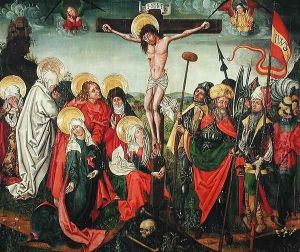(attr.to) Huter, Urbanus Paintings
Urbanus Rhegius Huter, often known simply as Urban Huter, was born in 1551 in Schwaz, Tyrol, which is now part of modern-day Austria. Not to be confused with the German Lutheran theologian Urbanus Rhegius (1489–1541), Huter was a late Renaissance/early Baroque artist whose work primarily consisted of creating copper engravings and etchings. His contributions are often considered within the context of Northern Mannerism, a style that emerged in the latter half of the 16th century, which was characterized by a complex composition, elongated figures, and often an artificial (as opposed to naturalistic) elegance.
Huter's work was influenced by the religious and socio-political tensions of his time, as well as the artistic trends that pervaded Europe. His body of work is not as well-documented as that of his contemporaries, and as such, details about his life and training are relatively sparse. However, it is known that he was active in the Tyrolean area and that his work reflects the broader movements within the Holy Roman Empire's artistic circles.
Urbanus Huter's death came in 1614, after a career that spanned the late 16th and early 17th centuries. During his lifetime, he would have witnessed the tumultuous events of the Reformation and Counter-Reformation, which not only shaped the political and religious landscape of Europe but also had a profound impact on its artistic expressions. Huter's engravings and etchings, though perhaps not as widely recognized today, contributed to the visual culture of his time and offer valuable insights into the aesthetics and techniques of the period.
